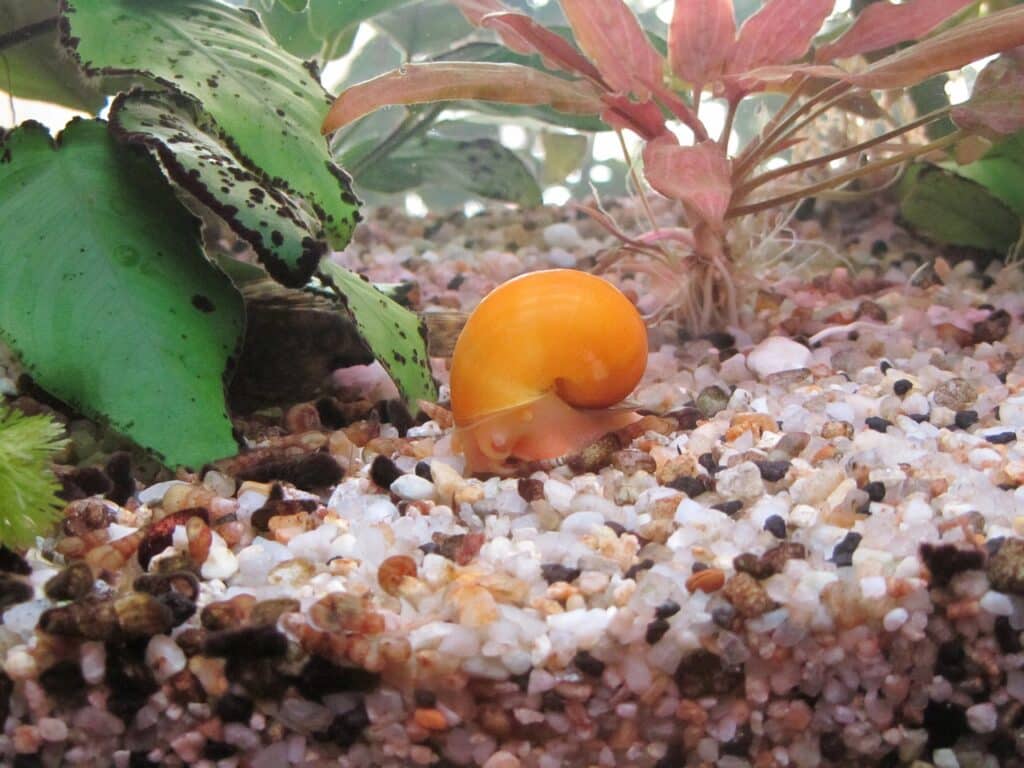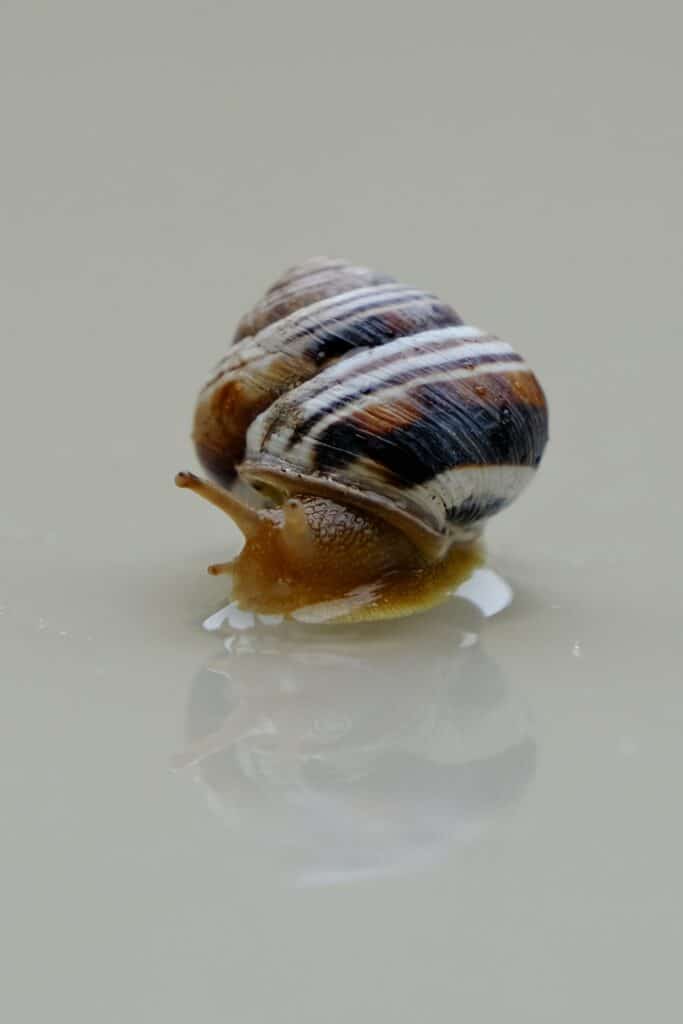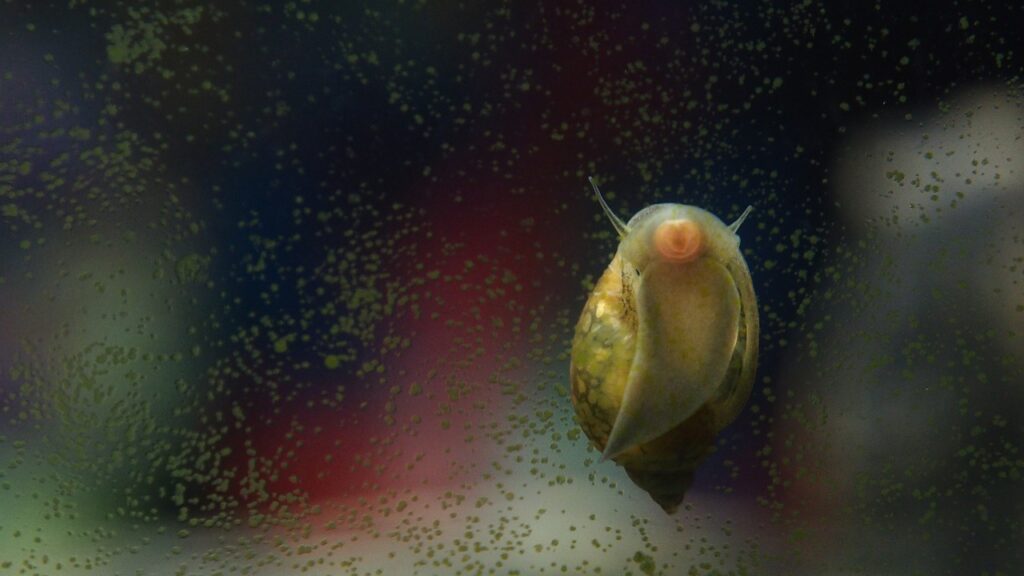Freshwater aquarium snails are a popular choice for many fish tank enthusiasts, and there are several different types of freshwater aquarium snails. These creatures can add personality, color, and life to any home aquarium. While they are low maintenance in general, there are a few things to keep in mind when it comes to the care and upkeep of your new pet snail.
In this article, we will introduce the five most popular types of freshwater aquarium snails and provide helpful tips on how to take care of them.

1. Mystery Snails (Pomacea bridgesii)
The mystery snail is often considered a type of apple snail and is one of the most popular choices for freshwater aquariums. They are native to South America and got their name because they often seem to disappear, then reappear days later.
Mystery snails come in a wide variety of colors, including gold, blue, ivory, and even albino. They also reproduce quickly, so it is important to keep an eye on the population in your tank or pond.
Care and Maintenance:
Mystery snails are relatively easy to care for and only require a few things to stay healthy and happy. They are not picky eaters and will consume algae, detritus, and uneaten fish food. They also need calcium to help with their shell growth, so be sure to provide a source of calcium in their tank, like crushed oyster shells.
In terms of tank parameters, mystery snails do best in tropical conditions with a pH between 7.6 and 8.4. They are also relatively tolerant of temperature fluctuations, but it is important to avoid sudden changes in temperature or water quality.
2. Nerite Snails (Neritina natalensis)
Nerite snails are another popular choice for freshwater aquariums. These small snails are native to Africa and Southeast Asia and have intricate shell patterns. Nerite snails come in a variety of colors, including black, olive green, striped, and even golden yellow.
Nerite snails also reproduce rapidly, as the female nerite snail can lay up to 50 eggs at a time. However, the eggs will only hatch if they go unfertilized. So, in most cases, you will not have to worry about a population explosion if you can remove the eggs fast enough.
Care and Maintenance:
Nerite snails are hardy creatures that can survive in a wide range of conditions, and their diet is primarily algae-based. However, if you have a clean tank with a few decaying plants, you may need to supplement their diet with fish food or other calcium-rich foods.
They can survive in a wide range of temperatures and pH levels, but it is best to keep the water temperature between 72 and 78 degrees Fahrenheit and the pH around 7.5. Be careful when using chemicals in the tank, as Nerite Snails are sensitive to them.

3. Apple Snails (Pomacea diffusa)
Apple snails are another type of freshwater snail that is popular among aquarium enthusiasts. These large snails get their name from their fruit-like shape and size, which can grow up to six inches in diameter! Apple snails are native to South America but have been introduced to other parts of the world, including Europe, Asia, and North America.
They are the world’s largest snail that lives in freshwater. Apple snails come in a variety of colors, including:
- Blue
- Green
- Brown
- Yellow
- Albino
- And more!
Care and Maintenance:
Because of the apple snails’ size, they produce a lot of waste and will need a bit more care than other types of freshwater aquarium snails. A tank that is at least 10 gallons in size is required for apple snails.
Apple snails need lots of places to hide, such as caves, rocks, and plants. This helps reduce stress levels and keeps the snail healthy. The temperature should be kept between 75-85 degrees Fahrenheit.
You should feed your snail a variety of foods, such as algae pellets, vegetables, and fruit. In addition, you will need to provide a calcium source for your snail to keep its shell strong. You can do this by adding crushed oyster shells or cuttlebone to the tank.
Apple snails should not be released into the wild, as they can become an invasive species. If you can no longer care for your snail, you should contact a local aquarium or pet store.
4. Ramshorn Snail (Planorbidae)
Ramshorn Snail is a common name used for several different species of freshwater spiral-shelled snail. The name “ramshorn” comes from the shape of their shells, which resemble the horns of a ram.
These small snails are native to Europe but have been introduced to other parts of the world as well. Ramshorn snails can come in a wide variety of colors Including:
- Brown
- Red
- Orange
- Pink
- Translucent
- Blue
Ramshorn snails reproduce quickly and can soon become a pest if their population is not controlled. However, many aquarium owners enjoy having a few of these snails in their tanks.
Care and Maintenance:
Ramshorn snails are scavengers and will eat algae, dead plants, and leftover food. They are not picky eaters! In addition, they help to aerate the gravel and keep the plants healthy.
Water temperature should be between 70 and 78 degrees Fahrenheit, pH levels should be between 7.0 and 7.5, and water hardness should be between 5 and 15 dKH. It’s important to test the water regularly and do water changes as needed to maintain consistency.
Ramshorn Snails don’t need a lot of decorations in their tank. Unlike many fish, they don’t need hiding spots. You can just let them roam around freely.

Aquarium Snails: The Low-Maintenance Pet
Aquarium snails make for an interesting and low-maintenance pet that can add life and color to any home aquarium. While there are a few things to keep in mind when it comes to their care and maintenance, these creatures are generally easy to take care of. We have introduced four different kinds of snails for freshwater aquariums and provided helpful tips on how to take care of them.
With a little bit of knowledge and effort, you can ensure that your new pet snail has a long and happy life. We hope you have enjoyed reading this article and that it has helped you learn more about these fascinating creatures.



